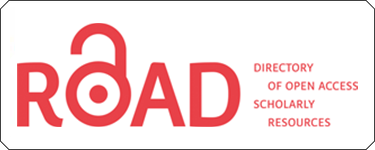EXPLORING LANGUAGE ATTITUDES AND IDENTITY CONSTRUCTION IN ARABIC DIGLOSSIA
Abstract
Keywords
Full Text:
PDFReferences
Ferguson, C. A. (1959). Diglossia. Word, 15(2), 325-340.
Asli‐Badarneh, A., & Asadi, I A. (2023, August 1). The impact of lexical and phonological distance on reading acquisition: The diglossic context of Arabic. https://scite.ai/reports/10.1111/1467-9817.12433
Thalab, H S A A., & Alwan, M B. (2022, January 25). Production, Perception and Identification of English and Arabic Vowels and Semi-vowels by Iraqi Arabic EFL Learners. https://scite.ai/reports/10.25130/jtuh.29.1.2.2022.22
Manfredi, S., & Istanbullu, S. (2019, September 11). A Multilayered and Data-Driven Method for Exploring Arabic in Multilingual Settings. https://scite.ai/reports/10.2307/j.ctvrnfqvw.16
Perlovsky, L. (2016). Physics of the Mind. https://scite.ai/reports/10.3389/fnsys.2016.00084
Daniëls, H. (2022). Diglossia. Pragmatics Quarterly Publication of the International Pragmatics Association (Ipra), 185-216. https://doi.org/10.1075/prag.00006.dan
Eviatar, Z., Taha, H., Cohen, V., & Schwartz, M. (2018). Word learning by young sequential bilinguals: fast mapping in arabic and hebrew. Applied Psycholinguistics, 39(3), 649-674. https://doi.org/10.1017/s0142716417000613
Farghaly, A. and Shaalan, K. (2009). Arabic natural language processing. Acm Transactions on Asian Language Information Processing, 8(4), 1-22. https://doi.org/10.1145/1644879.1644881
Harbi, A. (2022). Arabic diglossia and its impact on the social communication and learning process of non-native arabic learners: students’ perspective. Arab World English Journal, (283), 1-46. https://doi.org/10.24093/awej/th.283
Journal, A. and Zahrani, M. (2017). A study on the impact of arabic diglossia on l2 learners of arabic: examining motivation and perception... https://doi.org/10.31235/osf.io/f3shd
Makhoul, B., Copti-Mshael, T., & Dakwar, R. (2015). The development of sociolinguistic diglossic knowledge in oral-literacy mismatch situations: preliminary findings from palestinian arabs. Psychology, 06(09), 1168-1179.
https://doi.org/10.4236/psych.2015.69115
Omar, A. and Aldawsari, B. (2022). The impact of diglossia on the language development and educational achievement of saudi students in primary schools. World Journal of English Language, 12(5), 419.https://doi.org/10.5430/wjel.v12n5p419
Sabbah, S. (2020). Perspectives about diglossia in the arab world. International Journal of Language & Linguistics, 7(1). https://doi.org/10.30845/ijll.v7n1p6
Mohaidat, M M T. (2017, May 30). Modern Standard Arabic and Rural Palestinian Dialect: Patterns of the Active Participle. https://scite.ai/reports/10.5539/ies.v10n6p130
Omar, A., & Aldawsari, B D. (2022, June 27). The Impact of Diglossia on the Language Development and Educational Achievement of Saudi Students in Primary Schools. https://scite.ai/reports/10.5430/wjel.v12n5p419
Bentahar, Z. (2020, August 10). “Ytnahaw ga’!”: Algeria’s Cultural Revolution and the Role of Language in the Early Stages of the Spring 2019 Hirak. https://scite.ai/reports/10.1080/13696815.2020.1788517
Layes, S., & Torkia, B. (2022, February 21). Predicting word and pseudoword reading in Arabic‐speaking children: the independent contributions of phonological and morphological awareness and visual attention. https://scite.ai/reports/10.1111/14678578.12403
Dzierżawin, K. (2022, December 28). Polish–Arabic–English Trilingualism: A Case Study of Selected Language Biographies. https://scite.ai/reports/10.11649/cs.2660
Fuller, J M. (2007). Language Choice as a Means of Shaping Identity. https://scite.ai/reports/10.1525/jlin.2007.17.1.105
Arts, T., Belinkov, Y., Habash, N., Kilgarriff, A., & Suchomel, V. (2014, December 1). arTenTen: Arabic Corpus and Word Sketches. https://scite.ai/reports/10.1016/j.jksuci.2014.06.009
Al-Amr, M I. (2022, April 15). An Investigation into the Use of Endangered Languages in Different Domains in the Southern Society of Oman. https://scite.ai/reports/10.37745/ijellr.13/vol10n41932
Mohaidat, M M T. (2017, May 30). Modern Standard Arabic and Rural Palestinian Dialect: Patterns of the Active Participle. https://scite.ai/reports/10.5539/ies.v10n6p130
Qudissya, A P N S. (2022, September 15). On The Syntax of the Negative Constructions of the Palestinian Dialect . https://scite.ai/reports/10.36473/ujhss.v61i3.1684
Layes, S., & Torkia, B. (2022, February 21). Predicting word and pseudoword reading in Arabic‐speaking children: the independent contributions of phonological and morphological awareness and visual attention. https://scite.ai/reports/10.1111/14678578.12403
Tarone, E., & Swain, M. (1995, January 1). A Sociolinguistic Perspective on Second Language Use in Immersion Classrooms. https://scite.ai/reports/10.2307/329617
Ibrahim, R. (2011, April 15). How does dissociation between written and oral forms affect reading: evidence from auxiliary verbs in Arabic. https://scite.ai/reports/10.1111/j.1467-9817.2010.01443.
Jaradat, A A., & Al-Khawaldeh, N. (2015, September 1). Teaching Modern Standard Arabic for Non-Native Speakers as a Lingua Franca. https://scite.ai/reports/10.5901/mjss.2015.v6n5p490
Hamdan, J M., & Amayreh, M M. (2007, January 1). Consonant Profile of Arabic-Speaking School-Age Children in Jordan. https://scite.ai/reports/10.1159/000098338
Tibi, S., Fitton, L., & McIlraith, A. (2021, February 23). The development of a measure of orthographic knowledge in the Arabic language: A psychometric evaluation. https://scite.ai/reports/10.1017/s0142716421000035
Asadi, I A., Kasperski, R., & Sarid, M. (2023, March 8). The cumulative effect of socioeconomic status and dyslexia on linguistic, cognitive and reading skills among Arabic‐speaking children. https://scite.ai/reports/10.1002/dys.1735
Mohamed-Sayidina, A. (2010, October 22). Transfer of L1 Cohesive Devices an Transition Words into L2 Academic Texts: The Case of Arab Students. https:/ / scit e.ai/ r epo r ts/ 10.1177/ 0033688210380569












